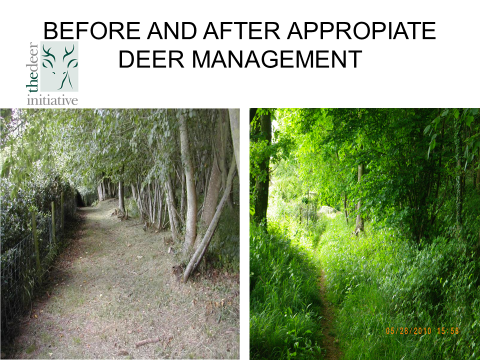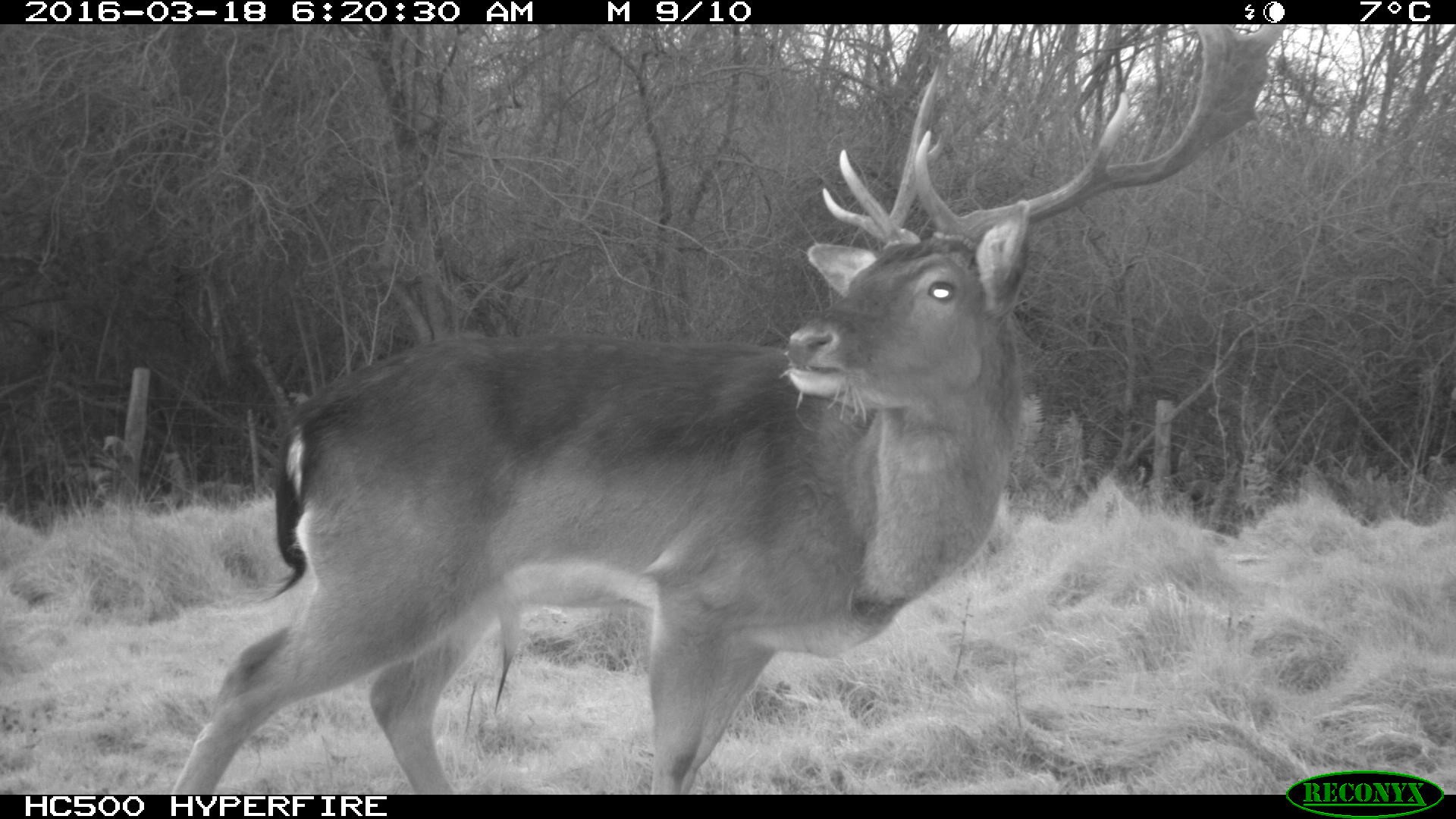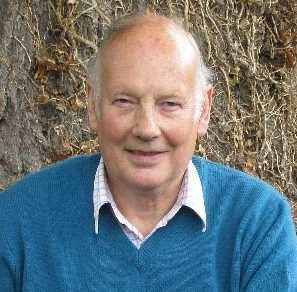Recognising Deer Damage
Deer management expert Patrick Faulkner talks about the increase in deer he has witnessed, when deer pose the greatest threats to motorists and how to recognize the level of deer damage in a woodland.

Patrick Faulkner is a qualified shooting coach and is involved in deer stalking training courses up and down the UK. In 2002 joined the Deer Initiative as a part time Deer Management Advisor.
“As a young boy living in west Herefordshire I spent much of my time playing in woods making bows and arrows and woodland dens. In those days we didn’t have wild deer locally and it was not until 1957 when we moved to Leominster that I encountered wild deer and discovered the damage they could cause to woodland and agricultural land.
Since then one or more species have progressively occupied pretty much all of the surrounding counties spreading right across Wales to the west coast. In some cases there are now three species of deer living in the same area side by side.
In the 1950s deer drives were held in the Dinmore Hill area, organised by the County Agricultural Executive Committee, culling up to 100 fallow at a time. Roe deer appeared in the early 1980s following a release on Wapley Hill near Presteigne. A smattering of Muntjac have gradually increased in numbers until now they are a major problem almost everywhere to woodland owners.
Due to my involvement in rifle shooting since the early 1950s it wasn’t long before I became involved in deer stalking and wanting to learn as much as possible about wild deer and their lifestyles.
In 2002 I was asked to join the Deer Initiative as a part time “Deer Management Advisor” to oversee a deer impact survey project in Herefordshire to help quantify the population density and level of deer impact in woodland SSSI sites for what was then ‘English Nature.’
Since that project was completed I have continued, but in a much wider role, I now cover the entire subject from identifying species, population densities, levels of impact, particularly in woodland Sites of Special Scientific Interest (SSSI), right through to all aspects of deer management training, butchery, to meat on your plate.
Recognising damage to woodlands

Sadly we often find deer impacts are misinterpreted as many people are unaware of the different types of impact each of the species living in the wild can cause, or how to recognise them.
Quite often when visiting woodland owners or gatherings of woodland managers I hear the statement that the lack of natural regeneration particularly broad leaf species is due to; “wrong type of soil, lack of parent trees to cast suitable seeds” etc. However on close examination I find it’s often down to deer and when this is pointed out I am told “but I rarely see a deer or, just a small family of roe”.
To aid our work one of the tools we regularly use is a trail camera, this proves invaluable and positive evidence to the woodland owners who often are amazed when shown the pictures of the culprits.
Another very useful way to identify deer impacts is an exclosure plot.
It consists of a 6’ diameter by 4’ high weld mesh ring placed over deer vulnerable habitat with a similar mix of species close by which can be used as a direct comparison. Again like the trail cams it provides an instant comparison of protected against unprotected areas, evidence which is undeniable. So when your deer manager informs you they have the deer under control and your evidence clearly shows otherwise you may wish to review his or her contract, if they have one!
Danger on the roads
The winter equinox is one of the two worst times of the year for collisions between wild deer and vehicles. This also happens to coincide with the fallow deer rut.
This is the time when male fallow are travelling from their normal feeding grounds to where their rutting stands are situated and when female fallow are gathering in their traditional mating areas, travelling from their summer quarters where they have given birth in June.
All of this movement just happens to coincide with the shortening of daylight, bringing dusk and dawn roughly in line with rush hour traffic.
A similar situation occurs at the spring equinox and what is sometimes referred to as the false rut, again triggered by the equal length of daylight and darkness hours.
In the mid 2000s The Deer Initiative carried out a national survey into road traffic collisions (RTC’s) for the Highway Agency.
The statistics proved difficult to acquire for a number of reasons. It was found that deer were not always identified as the cause of an accident. Also due to confidentiality reasons insurance companies were reluctant to divulge information relating to vehicle accidents.
However it was established that in excess of 70,000 RTC’s occurred each year in the UK with several hundred human injuries and up to 20 human fatalities.
When looking at the map recording RTC’s its quite clear that where most collisions occur there are the highest populations of deer and human traffic movements.
I was involved in a survey, monitoring surveillance cameras sited at strategic points on the A49 in central Herefordshire and because this is a trunk road which comes under the jurisdiction of the Highways Agency.
Eventually due to two main land owners implementing a very large cull in their woodlands a large reduction of the fallow deer population resulting in a dramatic reduction in collisions on the road to about two per year.
This reduction in deer population also allowed for the first time in about 30 years for the adjacent woodlands to start to naturally regenerate and once again provide much needed habitat for the many insects, invertebrates, small mammals plus an assortment of small woodland birds leading to an amazing regeneration of the woods.
In other words the continual damage caused by wild deer to the woodland habitat, the previously badly broken woodland ecosystem, once again flourished.

Patrick Faulkner
Patrick Faulkner is a qualified shooting coach and is involved in deer stalking training courses up and down the UK. In 2002 joined the Deer Initiative as a part time Deer Management Advisor. his role involves him in identifying species, population densities and levels of impact, particularly in woodland Sites of Special Scientific Interest (SSSI),

